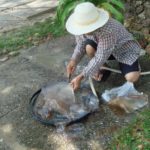This species (Nudaurelia petiveri) is widespread throughout western, central, and southeastern Africa. It appears in Kongo Central in December and January.
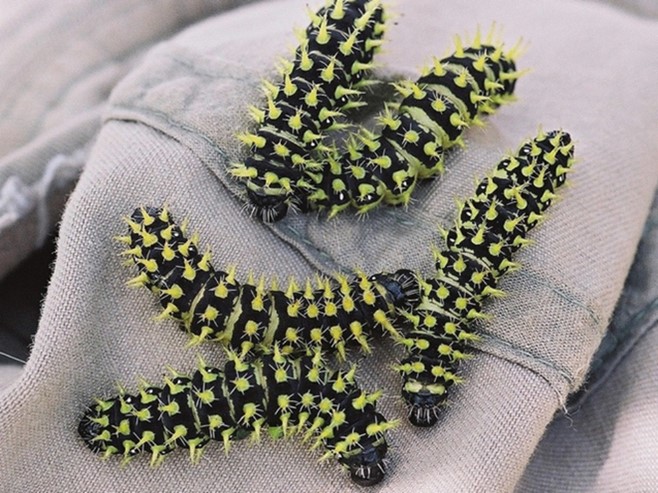
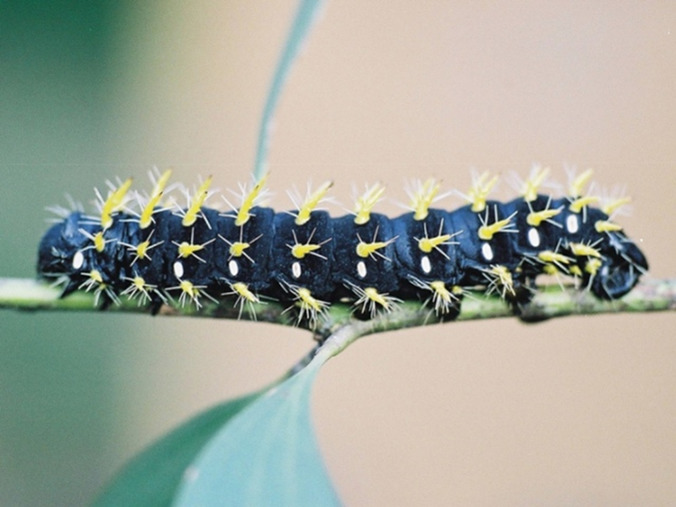
Up to 200 eggs are laid in clusters on the undersides of young leaves. They hatch after about two weeks. Larvae are often found feeding together in large numbers. Pupation takes place underground and there may be 4 to 5 generations per year. The moths hatch out when the soil becomes damp at the start of the rainy season.
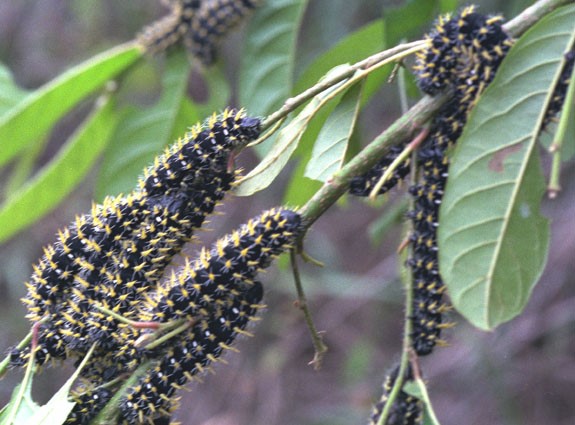
The caterpillars are most often found on Milicia excelsa in Kongo Central but may also be found on Ricinodendron heudelotii, Antidesma membranaceum, Vitex madiensis, Acacia auriculiformis and Psidium guajava. They can be transferred from one plant to another. This can be useful. If the young caterpillars are found far away from the home they can be moved to the village, to an Acacia auriculiformis for example, where they can be guarded more easily. The species is particularly rich in protein.
Food plants
Kifilu (Vitex madiensis)
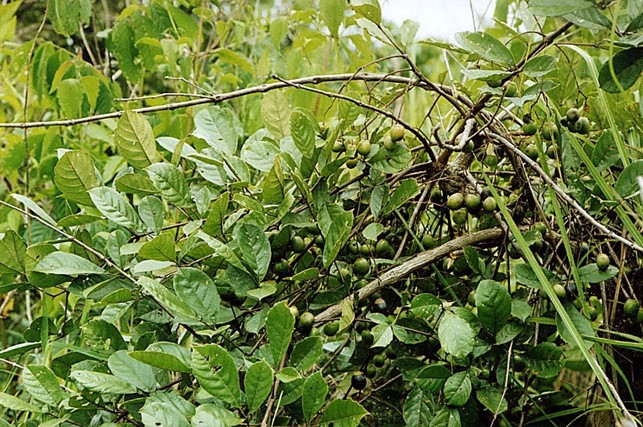
A small tree is present in the savanna. Bisu, Nudaurelia petiveri feed on the leaves. The fruits, which are up to 1.5 cm long, are edible and sweet and become black when ripe. A decoction, made from the young leaves, is taken for coughs, colds, diarrhea, and dysentery. The boiled roots are used to treat diabetes and anemia
Kifitidi (Antidesma membranaceum)
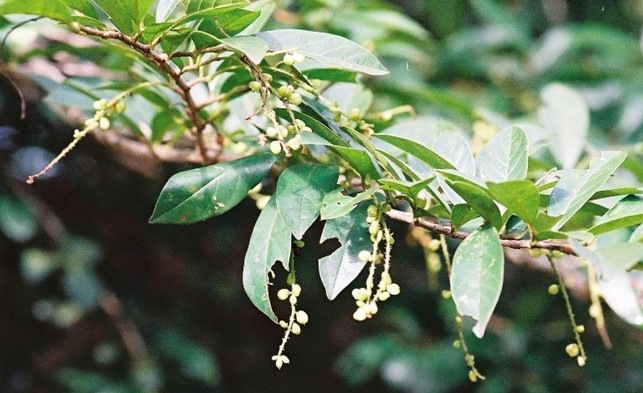
This small tree is widespread in tropical Africa, from Senegal to Ivory Coast, and from Angola to Mozambique. It is usually found at the forest edge in the savanna. It is the food plant for Bisu, Nudaurelia petiveri. An infusion of the leaves and roots is drunk to relieve coughing. Scrapings from the roots are used to cure mouth ulcers in children. Powdered bark is used as a dusting on wounds in Tanzania.
Nkamba (Milicia excelsa)

Traditionally this tree was planted near the village for timber and to attract Bisu, Nudaurelia petiveri, edible caterpillars. The timber is hard and durable yet easy to work and takes a good polish. The Heartwood is ant-proof and resistant to water and fungal diseases and is used for making furniture and canoes. It also makes good charcoal. The tree is fairly fire resistant when mature and used for boundary marking in the province. Young leaves may be used as a vegetable. The bark can be used for roofing houses and dyeing leather and cloth. The tree is best planted using fresh seed. These are extracted by soaking and squeezing fruit under water. If dried, the seeds can be stored for up to one year. Root suckers 12 cm long can also be used but must be planted vertically and are best covered over with a clear plastic bag.
More articles on this website about caterpillars can be found via the following links:
Edible caterpillars in D.R. Congo, Introduction
Edible caterpillars in D.R. Congo, Part 1
Edible caterpillars in D.R. Congo, Part 2
Collection of edible caterpillars in D.R. Congo
Edible caterpillars for food in Congo
Stinging nettle slug caterpillar in Vietnam
Green caterpillars, called ‘Kaba’
___________________________________________________________________________________________________________
Text and all photos at this article © Paul Letham. The professional background and contact information of the author of this article can be found here.
.


